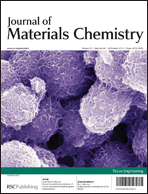Regenerative medicine is a promising therapeutic strategy for the repair and replacement of diseased or injured tissues and organs. The main approach for this method is the fabrication and use of scaffold materials to act as a surrogate framework and promote cell-seeded populations to develop into a mature and functional tissue. Scaffold based strategies for regenerative medicine have focused on the use of three dimensional, biocompatible, biodegradable structures to provide an adequate template for ex vivo cell expansion and maturation, native tissue ingrowth, and restoration of the original tissue qualities with respect to the tissue's biochemical constituents, morphology, form, and function. To achieve this, the use of fiber and/or textile substrates have been used as either the underlying skeleton or reinforcing agents with or without three-dimensional matrices to provide scaffolds that exhibit suitable mechanical properties, high cellularity, and better mimicry of the natural tissue organization and its resulting composition. In this article we discuss (1) fiber reinforcement in natural tissues, (2) literature examples of fiber reinforcement in engineered tissues, and (3) strategies and next steps to expand this field. Fiber reinforcement continues to be an ideal strategy for tissue scaffolds that require mechanical reinforcement while providing high surface volume in a compliant form.

You have access to this article
 Please wait while we load your content...
Something went wrong. Try again?
Please wait while we load your content...
Something went wrong. Try again?


 Please wait while we load your content...
Please wait while we load your content...